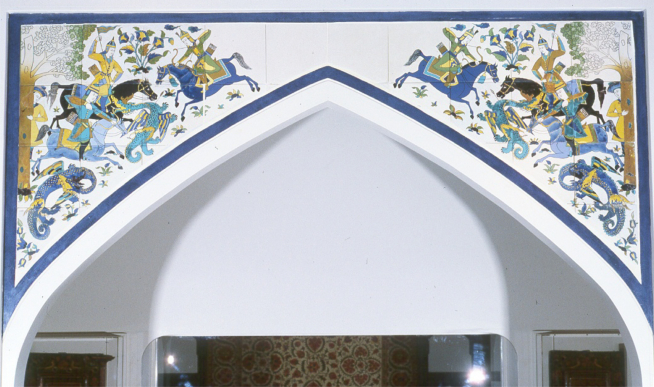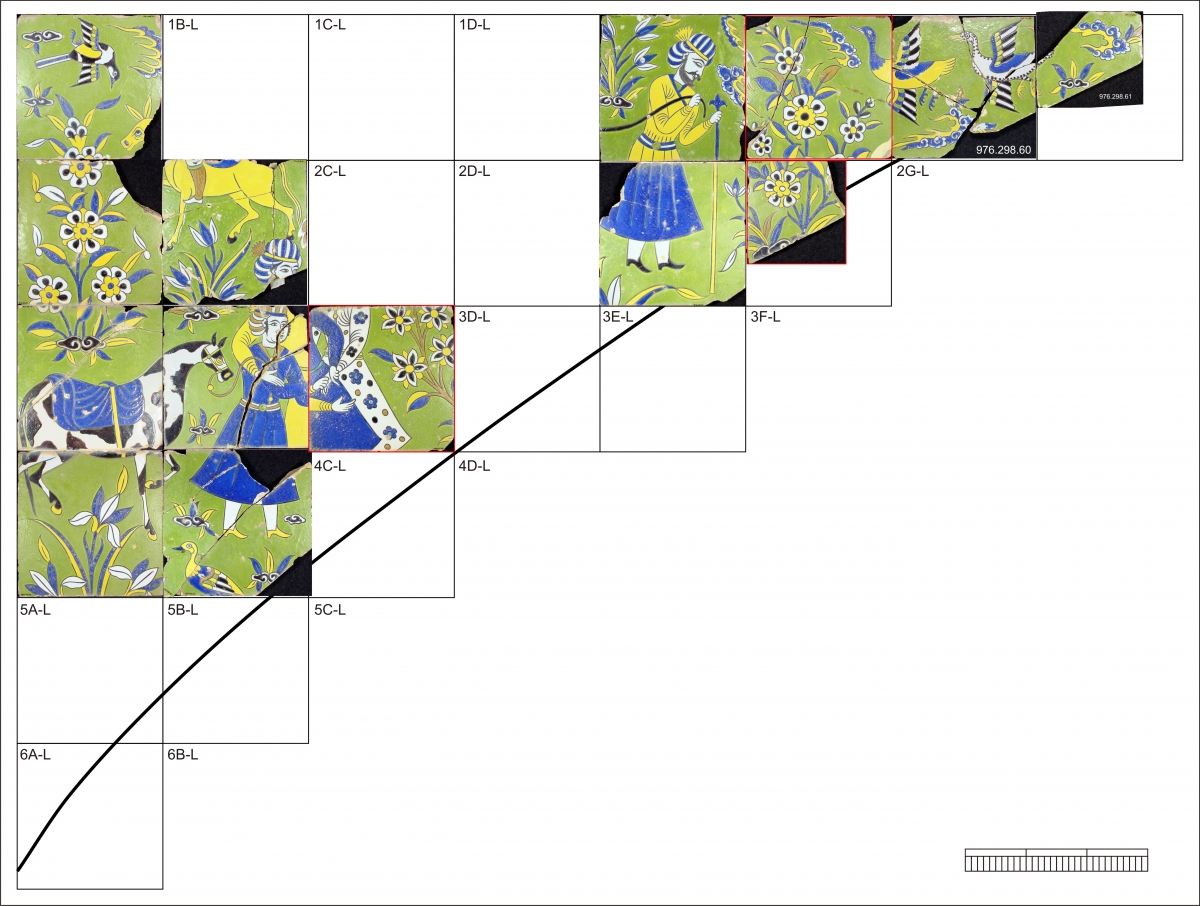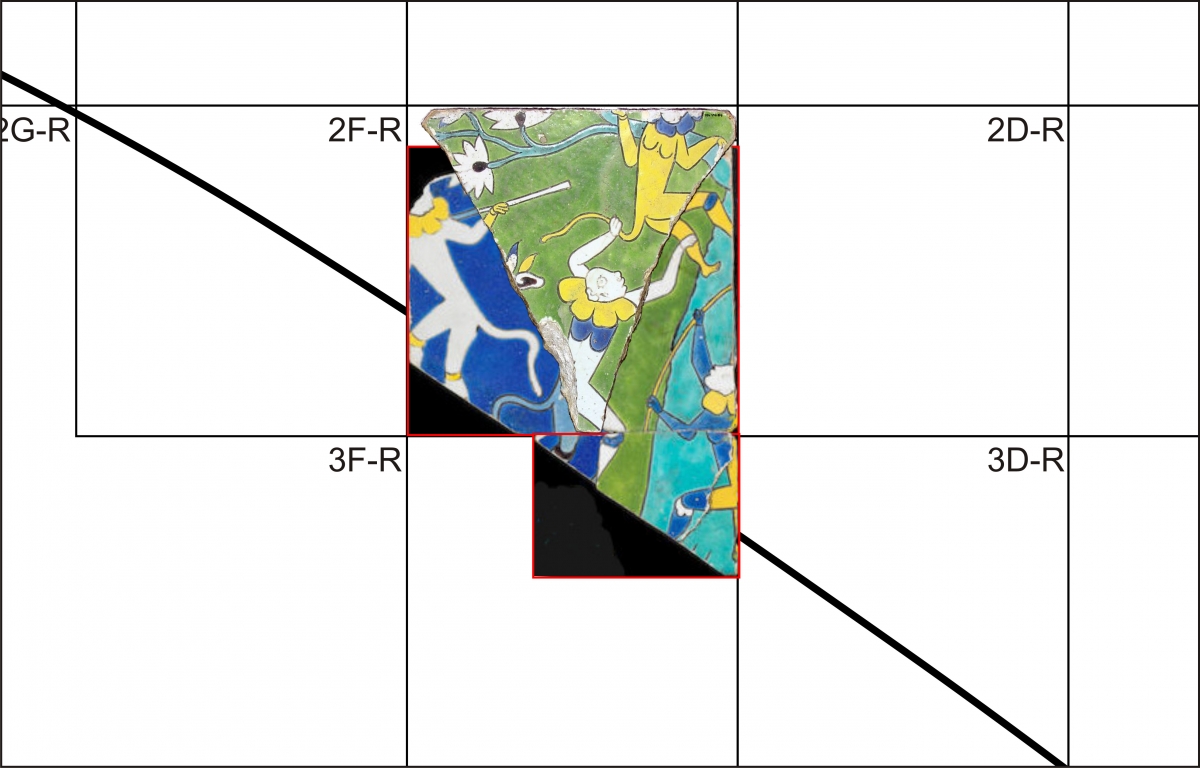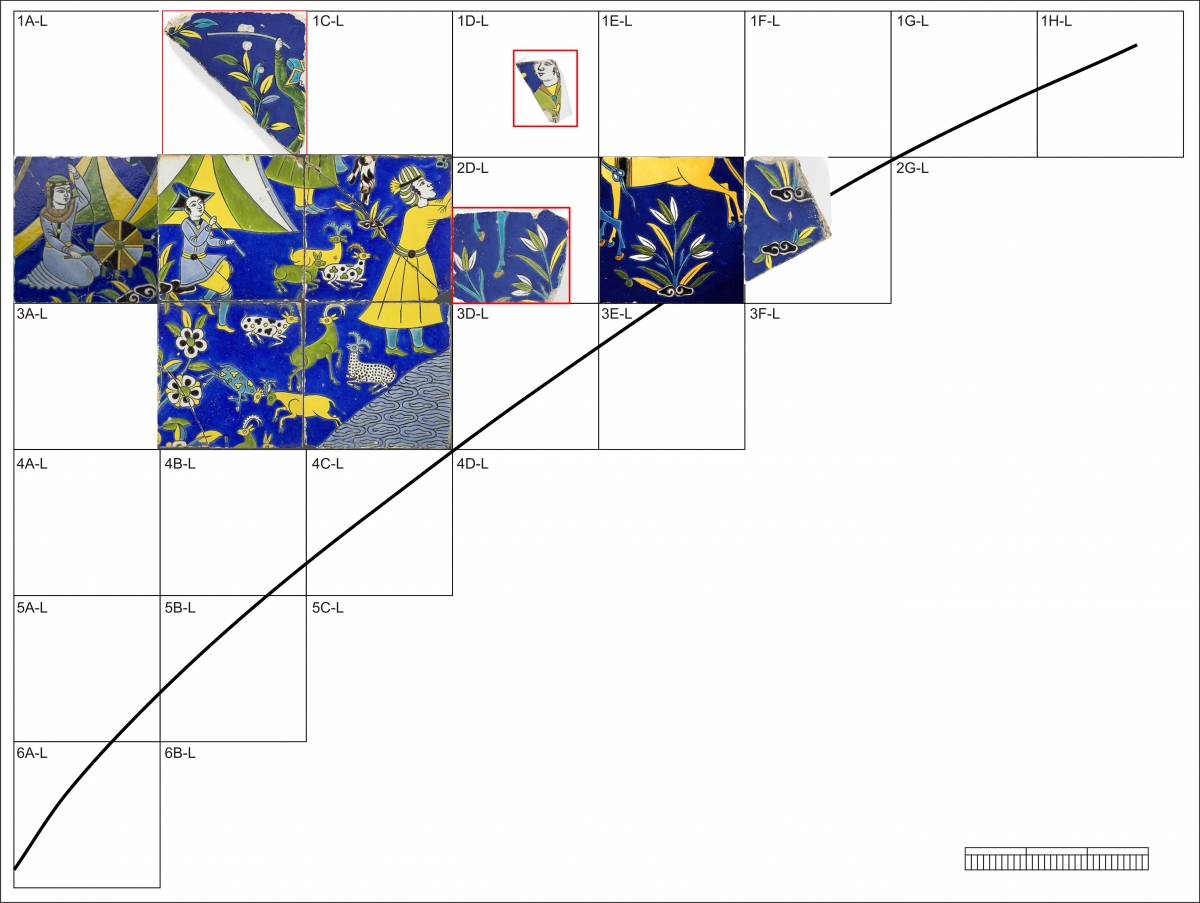Safavid Tile Project II: Rebuilding the Friezes

The ROM's Wirth Gallery of The Middle East is blessed with two complete friezes of cuerda seca tiles that would have been in the spandrels of arches. These were made in Iran in the last third of the 17th century under the Safavid dynasty, probably in Isfahan. They were bought by the ROM in 1974 by Curator Lisa Golombek together with a number of other tiles that make up parts of these friezes, or sometimes individual tiles. All of these tiles and others in collections around the world appear to have come originally from the collection of the Armenian antiquities dealer Hagop Kevorkian and started to appear on the art market after the London Exhibition of 1914. Lisa has been working on these tiles since acquiring them, but more recently has gained my help (archaeologist and scientist Robert Mason, the present author) to work out how these stray tiles may relate to each other and tiles in other collections.

Three versions of the "Lone Groom" from the frieze we call "The Grooms" in the ROM collection.
Each tile would have an identical counterpart mirrored on the other side of the arch, and also another arch with an identical design elsewhere in the palatial building they were originally made for. So that means there exist somewhere two versions of each tile, and two mirrored counterparts, all made from the same pattern or stencil. The ROM actually has three tiles from the same stencil, from a frieze that Lisa calls "The Grooms". From this you can see that although the pattern is the same, the coloured paints were not consistent, even in the same frieze, and the beards and hair, applied last, are also inconsistent.

Safavid cuerda seca spandrel tile frieze in the ROM collection which we are calling "The Grooms".
The spandrel friezes consist of tiles which are 24 cm square, arranged 16 across and 6 down each side. Using graphics software we created a wireframe of the layout of a typical frieze (see above) and images of each tile can be be placed where we think it should go in the model. However we do not have every tile, so sometimes it helps to be able to "flip" the tile over. A red outline to the tile indicates that the tile has been flipped over (see above). The reconstruction of "The Grooms" above shows what can be created from combining tiles with their flipped counterparts and also from the identical tile from a different frieze. The most significant part missing from this frieze is the horse being led by the lone groom, and it is probably significant that this would have made a very nice four-tile portrait of a horse, the sort of thing that would have made a highly desirable addition to the art collection of a horse-lover. Hopefully we will one day find at least one version of this horse.

Tiles with monkeys, the group on the left from a sales catalogue, the one on the right from the ROM.
Although we have not found tiles missing from "The Grooms" in other collections, we have had more success with some of our lone tiles that do not fit into any known friezes. Above are tiles with monkeys, the one on the right is in the ROM collection, the other fragments to the left are from a sales catalogue. If you look carefully at the collection of fragments you will see that one of the monkeys is a mirror version of a monkey on another fragment, but although the tree is the same turquoise colour, the background is completely different, so it is from the other side of the other frieze. If you look carefully at the ROM tile you will see on the upper edge in this photograph is a motif that is at the bottom of all of the plants in these friezes (you can see many examples in "The Grooms"). This actually shows that our tile is not properly oriented. So if we rotate our tile, cut out the fragments in the graphics software, and flip over the tiles from the other side of the frieze, we get this:

Spandrel tile frieze "The Monkeys".
Not only can we now see more of the design, but we can see exactly where on the frieze the monkeys would be. You may have noticed that one of the fragments from the sale is actually a piece of the ROM tile. The other fragments do not join this assembly of fragments, and would appear to be some distance away from the assembly, suggesting that monkeys are a very big part of this frieze, which is previously unknown to the literature, and which we are tentatively calling "The Monkeys".

Spandrel tile frieze "The Ship" with tiles from the ROM (top left), from a sales catalogue (bottom), and Brooklyn Museum (right).
Another single "orphan" tile in the ROM collection had what might appear to be the sails of a ship. First Lisa found the mirrored counterpart of the tile below it, although from the other frieze, in a sales catalogue, and then I found the tile next to it on the Brooklyn Museum online collection. We cannot place this on our grid as there are no traces of the arch, and clearly the ship continues in every direction, so this is another previously unknown frieze, which we are calling "The Ship". We like obvious titles.

Spandrel tile frieze "Bahram Gur and the dog" with tiles from Berlin, Chicago, and the art market.
Apart from looking at the ROM's tiles, we have been undertaking a comprehensive search for all related tiles and tile fragments from auction catalogues, museums, and web searches. Our catalogue of “orphan" tiles now numbers over 200. Above is a frieze first proposed by art-historian Ingeborg Luschey-Schmeisser based on the existence of a much later Qajar spandrel frieze in the British Museum, and a Safavid tile in the Berlin museum which also had a spinning woman in a camp. The four tiles together in the centre, from the Chicago Art Institute, were also known to be from this frieze. We have subsequently built on this with pieces from auction catalogues.
Many more tiles remain to be discovered, in private collections and museums, and we are hoping that collectors and curators will see this blog, and tell us about their tiles!
LINKS
